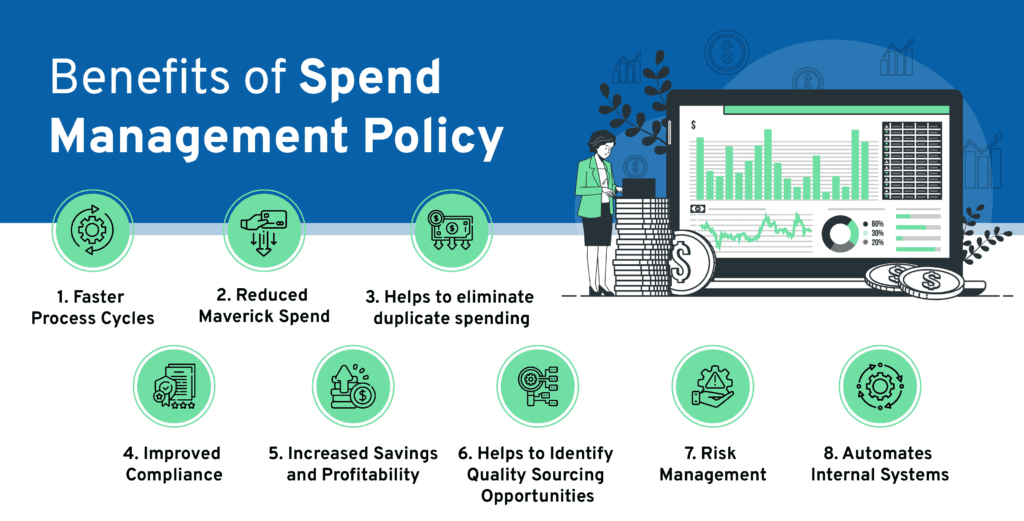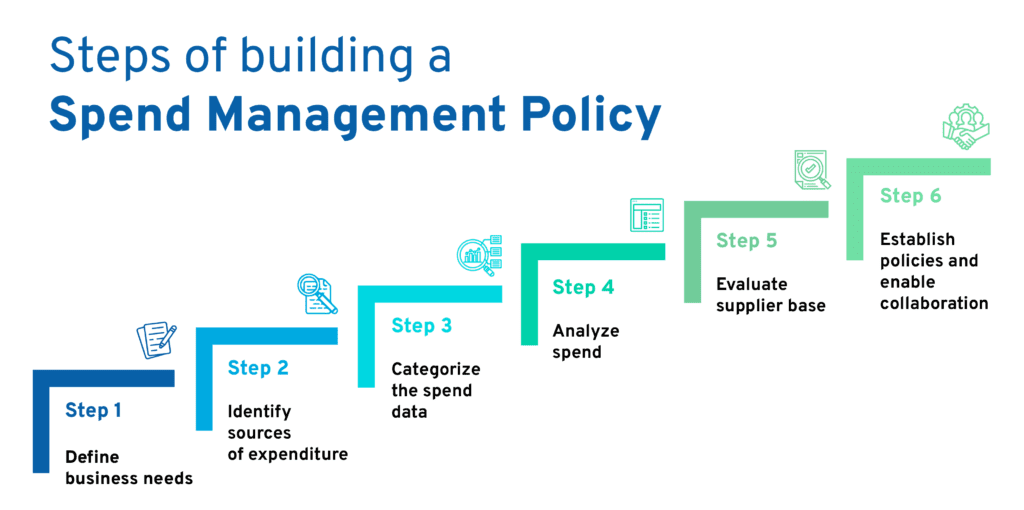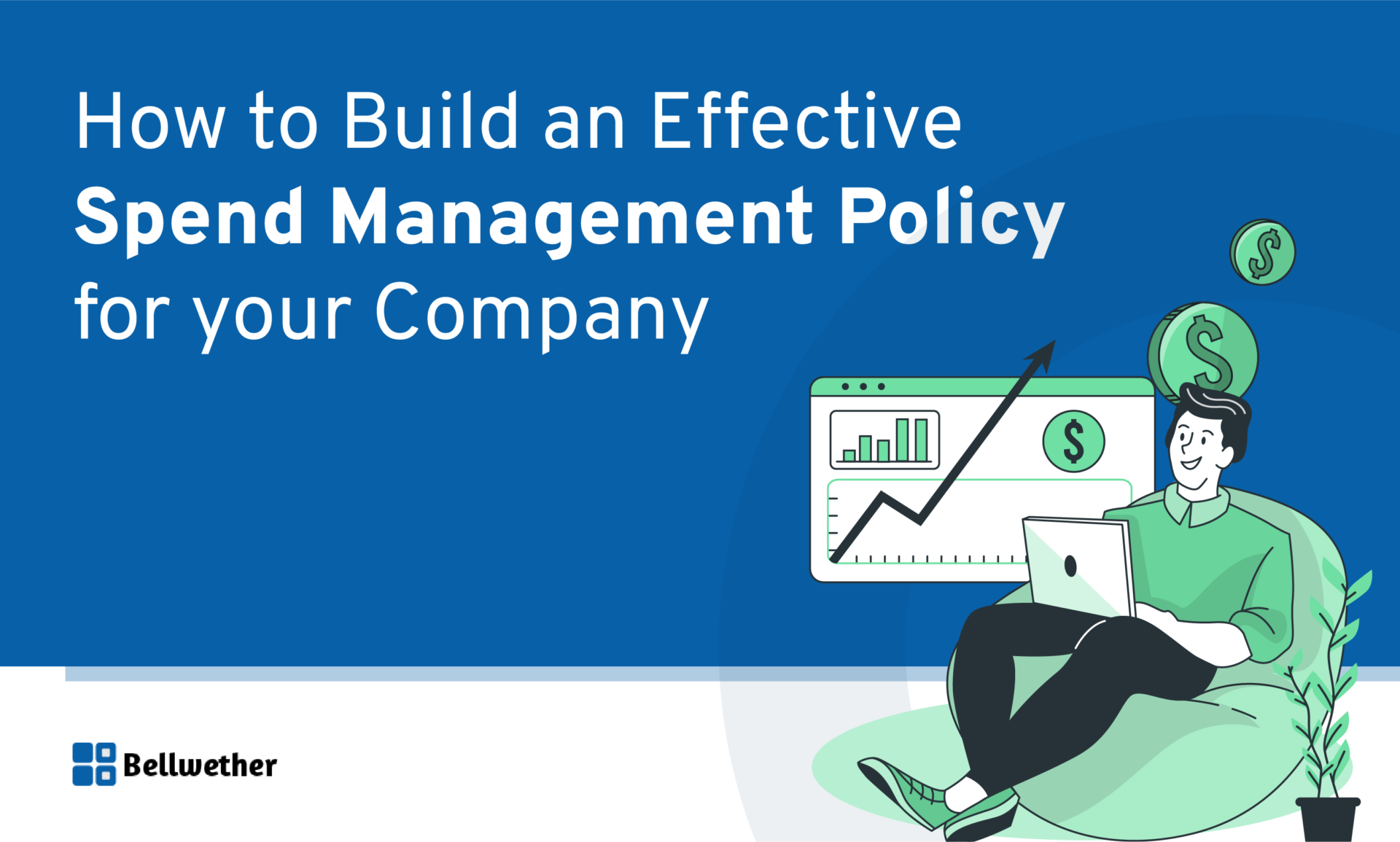The long-term success of your business depends on a variety of factors that contribute to the financial health and competitive strength of your company. Managing the financial health of an organization is crucial to achieving profitability. Managing the money flowing in from sales, investors, and funding is essential but it is equally important how you choose to drive value.
Earlier, the goal of spend management would be to slash costs wherever possible as every business unit or department worked towards achieving this simple goal. However, the flourishing impact of digital transformation has changed the way businesses look at spend management’s use in procurement.
Spend management in procurement has gained importance in recent times. More businesses are looking to change the direction of procurement from simple cost savings. Proactive value generation, risk reduction, and strategic support are the focus now.
What is Spend Management?
Management of spend is essentially providing valuable insights via centralized, transparent data management and real-time data analysis. It also includes managing costs and savings and reduction of risks through process optimization, systems integration, and continuous improvement.
An efficient spend management process includes mitigation of risks through internal controls, supply chain optimization, and process automation. It is also crucial to have robust supplier relationship management to consistently provide essential materials and services.
Additionally, intelligent contract negotiations and management through effective cost savings, integration with finance and other departments, financial reporting and budgeting, and strategic planning are all part of the spend management process.
Lastly, an important aspect of the spend management and expense management process includes attention to intangible value sources like environmental and social responsibility as well as reputational risks.
Benefits of spend management policy
Implementing a spend management policy will not only help boost bottom-line profits but it will also help in effective management of expenses. Here are a few more benefits of implementing a spend management policy.

1: Faster process cycles
In most companies, the process cycle times vary depending on the line of business. With a spend management policy in place, optimal decisions like designated suppliers, contract terms negotiation, etc. are pre-defined, which further help in reducing the process cycle time. Recurring activities like selecting a supplier and contract authorization are regularized by spend management policies.
2: Reduced maverick spend
When you analyze your company’s spend using spend reports, you can correctly identify maverick spending and avoid it successfully. This leaves less room for error because of the transparency provided by spend management. The ability to collect data in organized formats helps outline any anomalies and stall unauthorized spending.
3: Helps to eliminate duplicate spending
A solid expense management strategy makes it easy to reveal duplicate payments in a single invoice. In simple terms, spend management helps keep payments in check.
4: Improved compliance
Implementing a spend management policy means improved spend visibility. Such a policy helps with audit trails i.e. it becomes easier to trace, collate, and document expenditures that improve visibility into spend. This helps to comply with major regulatory requirements.
5: Increased savings and profitability
The most important and primary objective of a spend management policy is to identify and exploit savings opportunities. These eventually improve a company’s productivity.
6: Helps to identify quality sourcing opportunities
Management of spend means all expenses can be managed in one place and can be seen under reports. When such spend data is collated, it helps in showcasing expenditure on products inclusive of all peripheral costs, thereby securing cheaper and better quality sourcing opportunities.
7: Risk management
Analysis of spend helps an organization manage and monitor transactions to keep a track of the financial performance of vendors and their credibility. In the procurement industry, most projects are heavily dependent on suppliers, and knowing their credibility beforehand enables procurement managers to choose wisely.
8: Automates internal systems
Because of a spend management policy, an organization can look to automate its internal procurement processes as well. This will help a company to bring about visibility in the spending environment.
Steps of building a spend management policy
Here are 6 steps to consider while building a spend management policy:

Step 1: Define business needs
Defining business needs and establishing where your company stands currently, what is required to achieve business objectives, etc. is crucial. This can include knowing if your processes are manual or automated, do you have a decentralized procurement process or centralized, if your team is growing, etc.
Step 2: Identify sources of expenditure
Once the above step is done, it is essential that your company determines the sources of expenditure which can include employee salaries, licenses, utilities, rent, etc. These sources of expenditure are unique to every organization depending on the nature of the business. Hence, this is an activity every business must carry out uniquely.
Step 3: Categorize the spend data
Spend can be classified into various types of spend in a company. These classifications and categories are created depending on the objectives and operations of an organization.
Step 4: Analyze spend
Once you have collected and categorized spend data, analyzing it will highlight which expenses are recurring and if there are any anomalies. When your company starts analyzing spend, they can determine cost-effective strategies which can help drive growth in your organization.
Step 5: Evaluate supplier base
A healthy supplier base is a key to a successful spend management strategy. With spend analytics, your company can conduct periodic supplier audits and streamline and simplify them with the help of analytics and reporting capabilities of a spend management policy.
Step 6: Establish policies and enable collaboration
While building an effective spend management strategy, it is essential for the various departments in your organization to work in cohesion with the teams. Establishing procurement and spend management policies will ensure compliance. Your spend management policy will be successfully set up.
Challenges in spend management
1: Lack of accuracy in data
Spend data when entered manually is plagued with inconsistencies and errors. Complex data types which involve multiple aspects – if handled manually – are a riot on paper. This can lead to misguided decision-making and can also lead to increased costs.
2. Lack of awareness of spending sources
The primary step to spend management is to identify all sources of expenditure within an organization. It is essential that a business identifies cost centers and involves all the department heads responsible for costs. With manual processes, this becomes difficult for businesses and that is where managing spend becomes a challenge.
3. Bad analytics capabilities
Analytical skills are rare and expensive and not everyone can afford them. Hence, it becomes a challenge to extract the right kind of data from reports and analyze it. Investment in analytical capabilities is difficult as there are no immediate results which are visible.
4. Insufficient resources
Procurement teams have their hands full with their daily tasks of buying, managing supplier relationships, processing purchase orders, etc. Spend management requires a special skillset to analyze reports and come to conclusions which could help a company grow.
5. Multiple authorities
It is common knowledge that multiple department heads have to work together to collate data for managing spend in an organization. Collecting this data is not easy as it means encountering varying interests, lack of cooperation from people of different departments, and much more.
6. Resistance to change
Very often, spend management is looked at as a threat to some stakeholders in an organization. This means that not every department involved would be happy with the degree of transparency that comes with expense management.
While the above challenges seem difficult to overcome, that is not the case. With the right spend management solution and an automated procurement software which supports spend management, it is possible to make managing spend effective and resourceful.
Challenges come with solutions and can be overcome with the right spend management strategies. This will help an organization with maintaining transparency and locating errors more easily. The profitability of a company grows exponentially when spending is managed efficiently.
Conclusion
The importance of spend management starts growing exponentially when the expenditures of an organization increase. In simple terms, the growth of expenses is directly proportional to the importance of spend management in a company. Optimizing the spending process and keeping a track of expenses is essential.
Bellwether’s digital procurement software can automate your purchase to pay (P2P) process and help with managing spend of your organization and gaining transparency in the processes.







